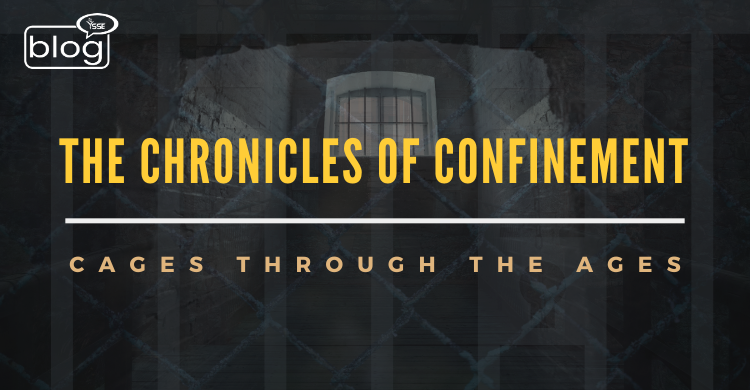Throughout history, cages have been used to hold and control people, from iron bars to invisible barriers today. The shape of great cages does not always depend on metal as sometimes they are caged by silence or fear or as much of human behavior is shaped today, as a mechanism of holding control over human beings. Even though the styling of great cages has changed. The intent, holding something out or keeping something in has remained.
Prehistoric: Use for survival
Cages were primarily used for survival purposes. When humans built enclosures of stone or wood to protect animals from predators, it was also to lock up the enemy. In some societies, humans were also caged as punishment or for display. Prisoners or slaves in ancient Rome were placed inside metal cages. These cages were dark, cramped, and inhumane. They were not only used to contain the body but to break the spirit. To most people, the type of cage was not just a physical one. It was used as a device for controlling others. Cages were used by kings and leaders to demonstrate power. They wanted everyone to see who had the power and what you got if you disobeyed.
The Middle Ages: Cages of Fear
As society evolved, so did the reasons for imprisoning someone. In medieval times, cages were frequently employed as an instrument of torture. Humans were placed in tiny iron cages and suspended from towers or trees. Left out for days or even weeks, they were at the mercy of whatever weather, wildlife, or public scrutiny came their way. It was a warning to others: behave or this might be you. There were also cages of belief. Those who did not believe in the king or the religion were a danger. They jailed many for taking the wrong positions without ever harming anyone. The fear of change and the fear of freedom made up these cages.
Colonial Period: Cages of Power
Colonization happened and it was a different sort of enclosure. Humans were enslaved and taken from their homes. Ships became floating prisons. Chains became the norm. During these times, communities were being subdued through cages. Not only were their bodies caged, but their culture, language, and identity were caged too. Even those who were not bound by physical chains existed in unseen cages. Racism, class, and laws of exclusion ensured that some were free and others were not. These cages were quiet but deep. And many of them still do today.
The 20th Century: Cages of the Mind
As we entered into the modern age, the physical cages became less prominent prisons were built outside of cities and behind tall walls. Out of sight, out of mind. However, a new cage began to materialize. It’s the mental cage. In war, people were told what to think. Propaganda was the weapon of control. In certain countries, freedoms of expression were hushed, punished, or made to disappear at the expense of ‘national security.’ Individuals were silenced using fear. Fear was the lock and society was the cage. Here too, people turned inward. Depression, anxiety, and other inner struggles were not well understood. They were relegated to institutions and shut out of society. The walls were white, the windows barred and hope was distant.
The Digital Age: Cages Without Walls
Now, we exist in a universe of screens, passwords, and information. We are free, but we are monitored, surveilled, and judged. We show off perfect lives, perfect bodies, and perfect dreams on social media. But behind screens, behind closed doors, others are feeling imprisoned. We desire likes, followers, and acknowledgment. We fear being as pie as those abandoned. As we compare ourselves to others, we build for ourselves new cages. They are silent. They never ring. But they are strong. Surprisingly, with our imagination, we cage people too. We quickly judge them by their looks, where they come from, or even their beliefs. The walls may not be apparent to us, but they are built by ignorance, fear, and prejudice.
Breaking Free
While cages have changed shape over the centuries, so too has the determination of those who are in them. History bears out that human beings have always found a way to resist, to hope, and to break free. From bold voices speaking out to quiet acts of kindness, every action matters. Breaking free today may be speaking your truth, searching for others, or simply choosing love over hate.
We all have cages. Some are put upon us. Some we build. But once we realize they are there, we can start to open the doors.
To read more blogs like this, click here.
Writer,
Sudipto Banik
Intern, Content Writing Department
YSSE

